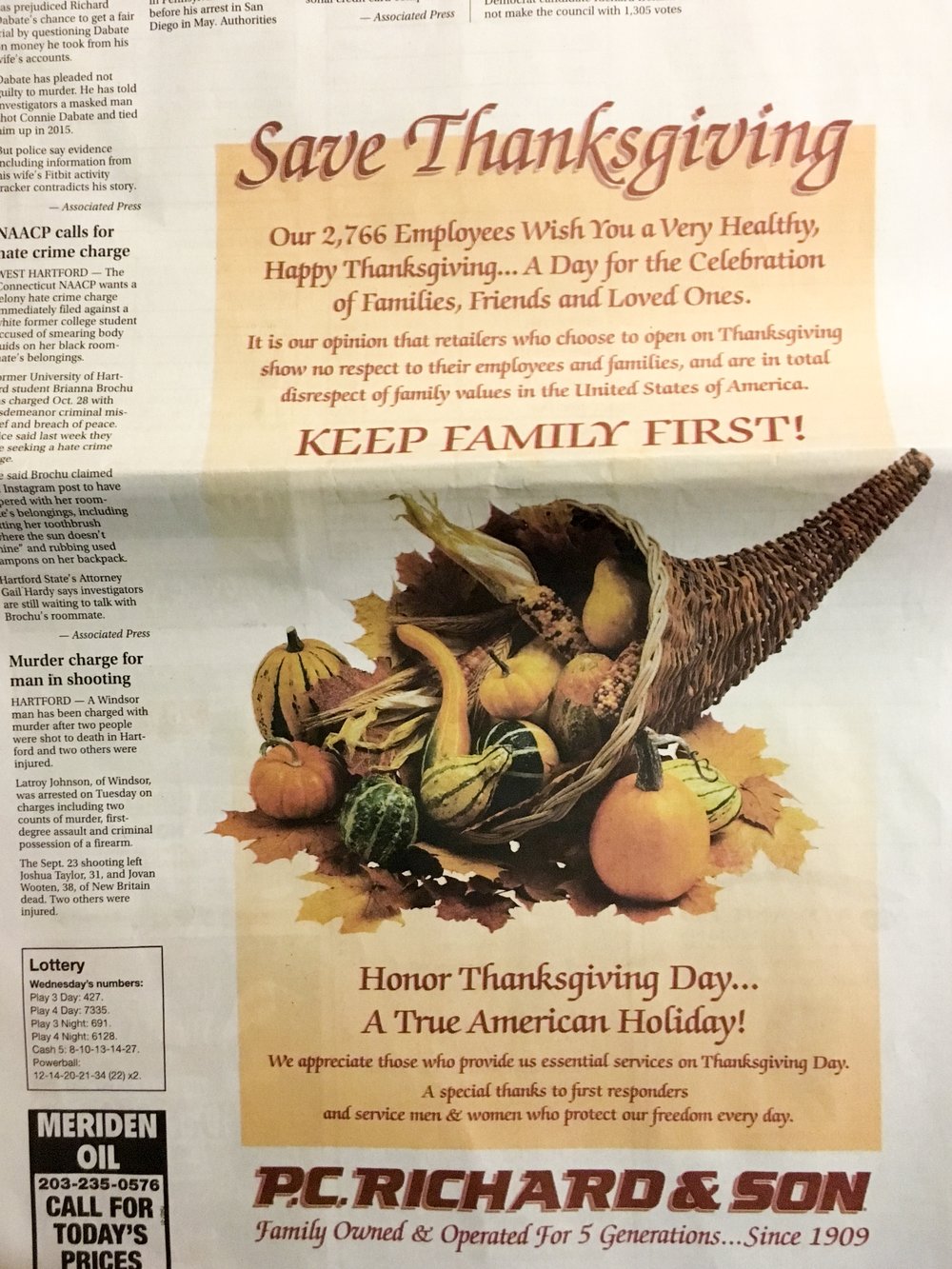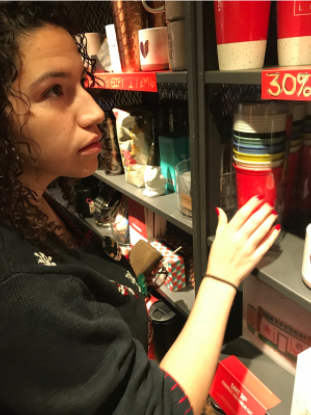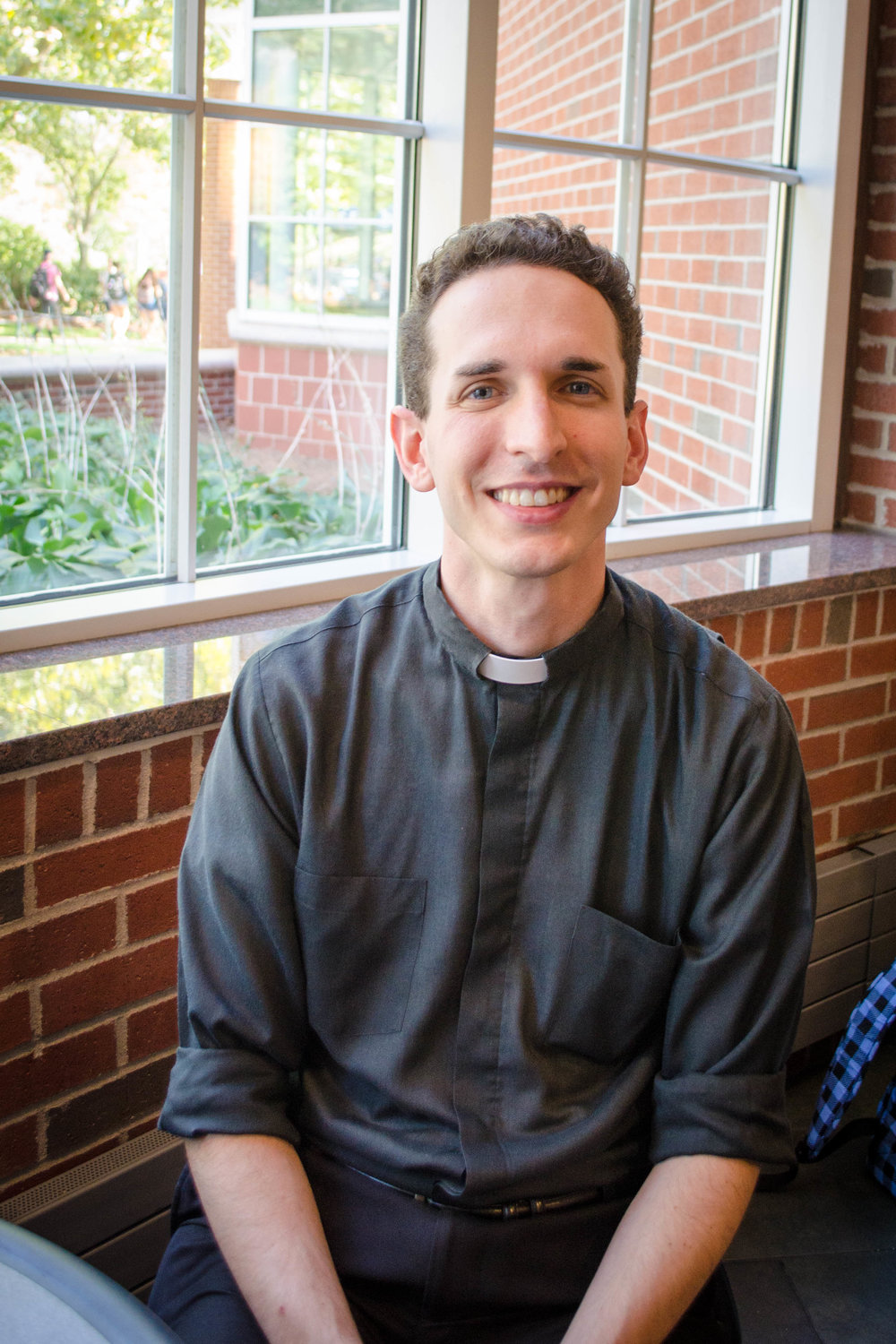By Lindsay Pytel

Pristine wrapping paper rolls, funny singing and dancing elves, Santa Claus blow-up lawn decorations, all displayed on shelves in your local department stores … and all of this has been up since the day after Halloween.
It seems like each year we get into the Christmas spirit earlier and earlier. That’s right, the Christmas season is upon us once again and for most Americans it’s time to find the perfect gifts for friends and family. American spending during the Christmas season has continued to increase for the past ten years, according to recent data.
Since 2008, retail spending in the Christmas season has increased from $501.50 billion to $655.80 billion. Spending in 2017 is projected to rise 3 to 4 percent with overall sales ranging from $678.80 billion to $682 billion, according to the National Retail Federation.

The commercialization of Christmas is nothing new, but the continued increase in sales has left many wondering if we’ve gone too far. Most Connecticut residents say they certainly think the holiday has become too commercialized. In fact, 72 percent of local residents said they felt this way out of 95 respondents in an online survey conducted by HQ Press.
Brian Jones, a Quinnipiac marketing professor, 62, says that from a marketing and business standpoint, Christmas is not what it used to be. Religion is never even mentioned in advertisements anymore.
“It’s gone,” Jones said. “I’m not a religious person, but I think the religion has kind of just disappeared out of Christmas. It’s all about the presents now. This isn’t surprising or new, I mean everybody’s been complaining for a long time about the ‘commercialization’ of Christmas.”
Rev. Jordan Leneghan, executive director of religious life at Quinnipiac University, says that on a religious level, the holiday has definitely become too commercialized.
“For me as a member of the clergy and person of faith the issue becomes how the language and the symbols are appropriated or I would say perhaps, better put, misappropriated for just (a sort of way) to advance this commercial engagement,” Leneghan said.
He provided an example of a recent article he read in The New York Times about a grocery store in England advertising an advent calendar with a manger scene, but instead of baby Jesus, there was a sausage.
“There were a lot of people on Twitter and social media that were objecting,” Leneghan said. “(They said) ‘Why can you appropriate Christmas symbols this way and get away with it, but with other religious communities there would be hell to pay?’… So that’s my biggest issue with the commercialization of Christmas, it’s one thing with ‘happy holidays,’ you’ve got a piece of green with a bulb hanging off of it, or red candles, but it’s when you start appropriating actual religious symbols I think it’s problematic.”

Quinnipiac student Emma Robertson shopping for friends and family at the Quinnipiac bookstore. Photo by Lindsay Pytel.
Quinnipiac student Emma Robertson was one of the 95 respondents of the HQ Press survey, and one of the 72 percent who believe Christmas has become too fixated on commercialization.
“I think that Christmas is definitely commercialized in almost every way,” Robertson said. “Obviously it began as a religious holiday…but today it has completely changed from its original purpose. It seems like today, it’s all about presents – what you’re going to buy or what you’re going to get. It’s all about money.”
Robertson says she believes it’s due to the over-exposure of gifts displayed in advertisements.
“I think the best example of this is commercials on TV,” she said. “All you see after Thanksgiving is toy ads and clothing ads and they imply that the holiday season is all about giving material things.”

A P.C. Richard & Son advertisement from this past Thanksgiving in the Meriden Record Journal. Photo by Lindsay Pytel.
In the survey conducted by HQ Press, most respondents said that they think they will spend either more than $300 (35 percent) or $101 to $200 (32 percent) on Christmas gifts in 2017.
The Christmas season seems to start before Thanksgiving has even begun. In fact, some stores offer deals on Thursday night to gear up for Christmas. Stores began doing this a few years ago most likely to stay face with competitors. However, now a lot of stores advertise the fact that they don’t open on Thanksgiving in an effort to honor the traditions and family values that Fontanez mentioned before. Some of those stores for this year included T.J. Maxx, Nordstrom, Ikea, P.C. Richard and Son and more, according to data collected by bestblackfriday.com.
Jones says he feels that this increase in spending will never stop and he’s seen a shift in the way we celebrate Christmas.
“It’s not like ‘It’s a Wonderful Life’ anymore, it’s not like it’s ‘Miracle on 34th Street’ anymore. It’s now about the presents and the marketing, you know Black Friday and getting a deal and shopping,” Jones said. “I’m one of these fatalists that believes that some of these trends are irreversible…I don’t think it’s going to better anytime soon…We’re on a treadmill we can’t get off.”
He says he and his wife have different philosophies of Christmas, where he goes and asks relatives what they want, but she likes to give them something meaningful.
“My wife hates that because I’m falling victim to this commercialization of Christmas,” Jones said. “I think the way to make these people happy is getting the present they want. Maybe that’s a little bit the marketer in me, study your market’s needs and then satisfy them. If she had her way, she wouldn’t ask anybody what they want for Christmas…For years she gave our relatives cookies for Christmas that she baked herself. And I thought ‘They’re gonna think we’re cheap,’ but really she’s right, I’m wrong, because she’s giving of her time, giving a little piece of herself, she’s baking something from scratch and sending it to them.”
Less than 30 percent of survey respondents said that Christmas hasn’t become too commercialized, however.

Francesca Fontanez shops for Christmas decorations and presents to make her dorm at the University of New Haven feel more festive. Photo courtesy of Francesca Fontanez.
“I think Christmas is about so much more than commercialization,” University of New Haven student Francesca Fontanez said. “Coming home and being with friends and family, partaking in traditions and spreading kindness are all still held at such a high standard – at least in my experience.”
Rev. Matthew Gworek of Our First Lady of Mount Carmel Church and Catholic Chaplain at Quinnipiac University, 29, says that he thinks that the commercialization of Christmas could be a good thing.
“It has become very easy to take this commercialization and spending and hold it up as the antithesis of the real meaning of Christmas,” Gworek said. “But to be honest, I’m not sure if that is entirely fair either. While the commercial aspects of the season can certainly be excessive at times and have played a role in distracting some people from a religious understanding of what Christmas is, the ways in which we do things and spend our money can be a beautiful reminder to us of the fact that this time of year is, and needs to be, different. The increases in spending are often intimately connected to increases in giving and a more charitable focus in people overall.”

Gworek’s church, Our First Lady of Mount Carmel in Hamden. Photo by Lindsay Pytel.
Christmas, of course, on a religious level is the celebration of Jesus’ birth. Across the generations, however, there has been an increase in those who consider themselves as “unaffiliated.”
According to Public Religion Research Institute, among those who consider themselves “unaffiliated” are 38 percent of people ages 18 to 29, 26 percent of people ages 30 to 49, 18 percent of people ages 50 to 64 and 12 percent of people ages 65 and up. This raises the question as to if the increase in lack of faith is the reason for a rise in commercialization.
Rev. Paul Fleck of Hamden Plains United Methodist Church, 47, thinks all holidays can be considered commercial, but not at any greater level now than in years previous. He also says it isn’t the reason society as a whole has become less religious.
“There are a lot of, plenty of false idols of the culture that draw us away from what I think truly gives our life meaning and I think that happens during pretty much any season,” Fleck said. “Certainly there are false idols of patriotism during July 4 that draw us away from our true allegiance to God. There are false idols of trying to out scare each other during Halloween that draw us away from the true meaning of All Hollow’s Eve and All Saint’s Day that follows… I don’t know that commercialization has done that nearly as much as the busyness of our lives has drawn us away from church.”
While society may be heading more towards being unaffiliated, Fleck and Leneghan both say at Christmastime attendance in church skyrockets. Leneghan says he thinks at a parish he helps with the number of people nearly double and sometimes that can be overwhelming.
“Sometimes I dread Christmas,” Leneghan said. “You know, it’s packed with all of these people and they only come for certain things and they take off and for the rest of us what it means to be in a religion is to be part of the ongoing faith community and so that’s something you just can’t put on once a year for an hour… I also kind of question, ‘What are you really doing here?’ ‘What do you get out of (it)?’ ‘What’s the point in coming for one hour, once a year?’”
He answered his own questions saying he thinks it’s because of the fact that Christmas kind of offers a “no strings attached” policy.
“I understand, in some ways Christmas is easier for people than Easter,” Leneghan said. “Easter still makes some claims because Easter is like ‘adult Jesus’ whereas Christmas is ‘baby Jesus’ so it’s all about presents. So there’s not a lot of existential claims as Christmas as a holy day makes on you, apart from Christmas as a holiday.”

Rev. Matthew Gworek of Our First Lady of Mount Carmel in Hamden and Quinnipiac University Catholic Chaplain. Photo by Lindsay Pytel.
In the survey conducted by HQ Press, however, the respondents were split pretty evenly on yes or no in regards to whether or not they were going to attend a Christmas service this year (41 percent “yes,” 44 percent “no,” 10 percent “maybe”).
Gworek agrees with Leneghan saying that it’s not ideal for people to only come to church during the Christmas season. However, he feels that even just coming the one day can leave a lasting impression.
“That spirit is something we see this time of year in churches that fill up in a wonderful way on Christmas Eve and Christmas Day like almost no other day of the year,” Gworek said. “I don’t think that’s an accident. Instead, I would say it’s a reality that expresses how, deep down, people understand that there’s something special about this day, and that something special leads them to have at least some kind of desire to set foot in a church.”